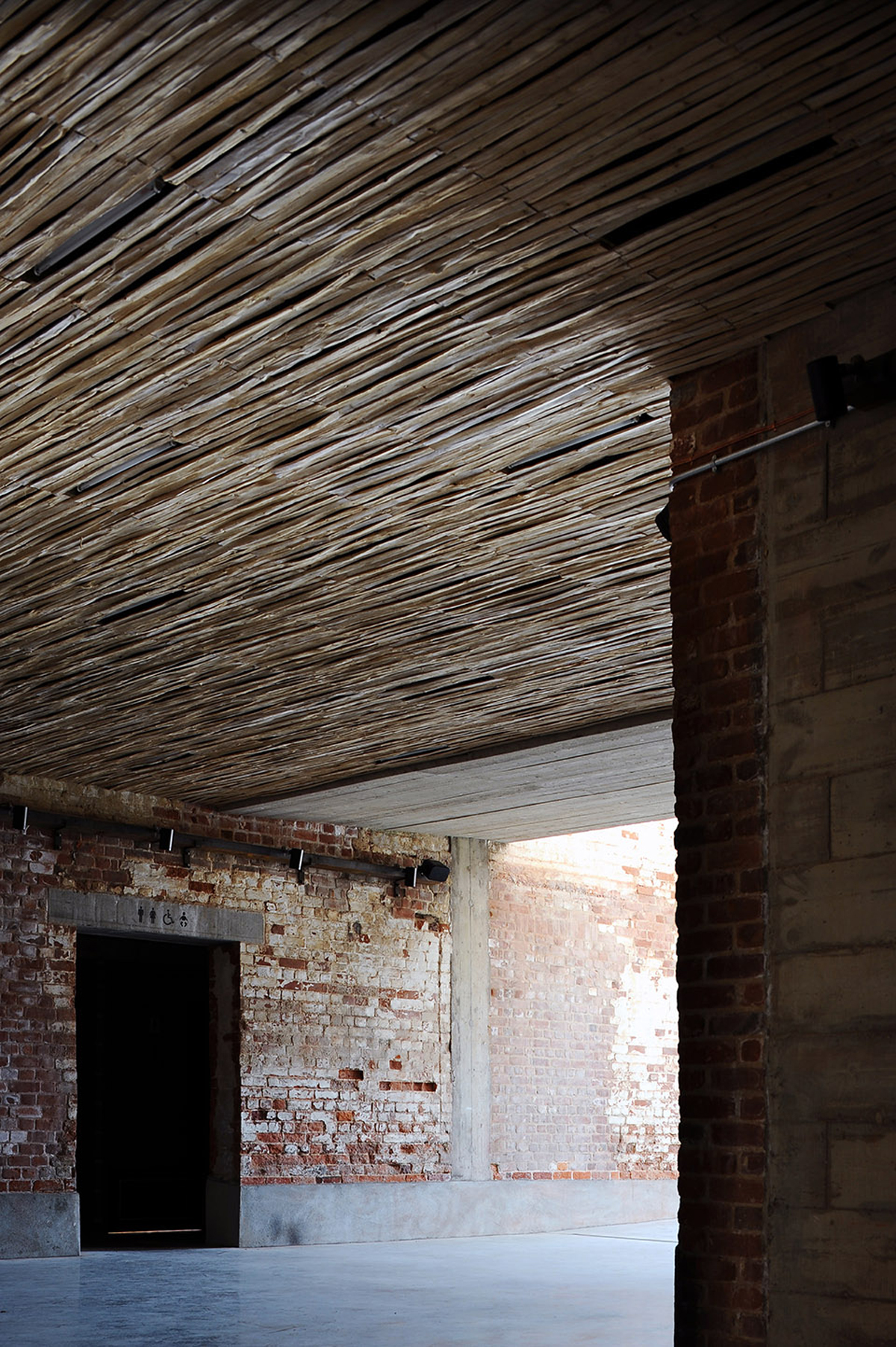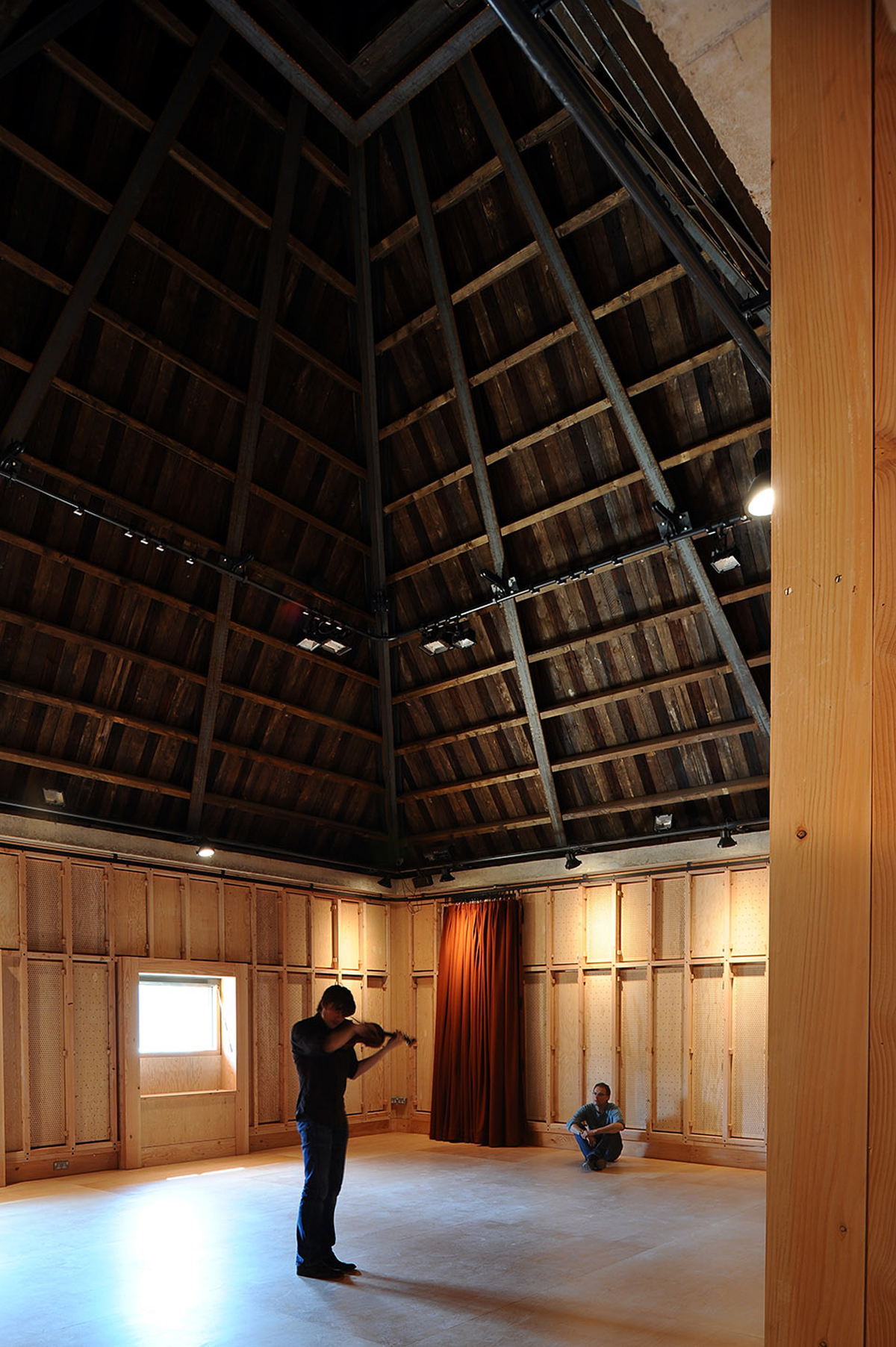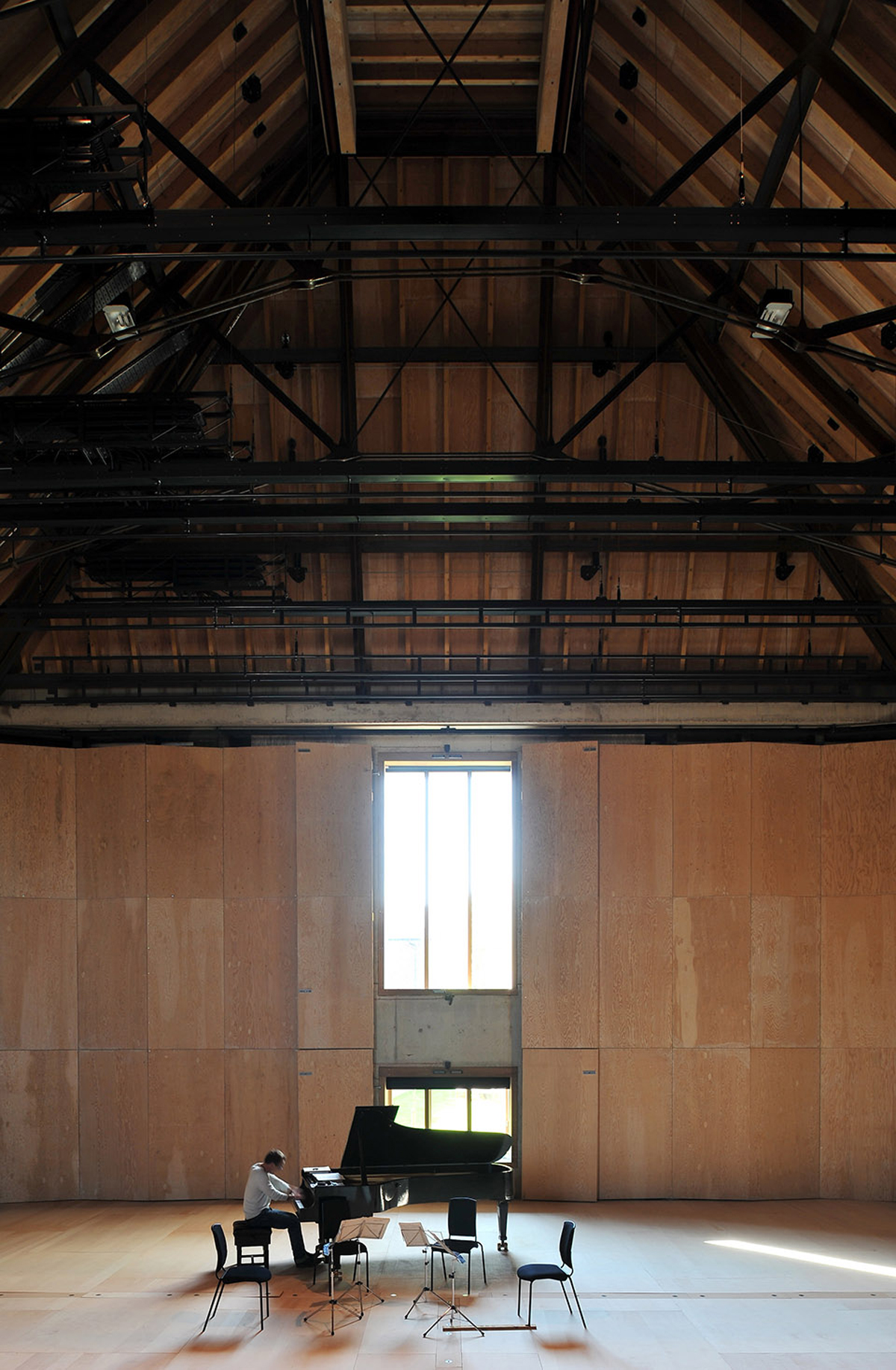Aldeburgh Music’s new creative campus at Snape Maltings is part of a phased development of grade 2 listed 19th century maltings buildings at the edge of the Suffolk marshes, brings a range of derelict granaries and kilns into use as rehearsal and occasional public performance spaces grouped around a communal foyer. The centrepiece of the project is a new build orchestral rehearsal room, the Britten Studio, designed to complement the nearby concert hall (by Arup Associates, completed in 1970). The rehearsal room incorporates retractable seating for 350, enabling it to be used as a public venue. A second space, the Jerwood Kiln Studio, was converted from a derelict kiln and can also accommodate public performances when required. The central foyer and technical get in was formed from an existing granary sandwiched between older structures, its eccentric timber roof adapted and a new concrete mezzanine installed.
Musicians are drawn to Snape Maltings’ unique sense of place, a combination of the austere industrial architecture and the wide, almost abstract landscape of the marshes. The newly renovated buildings seek to capture that sense of place, drawing on the surviving texture of the derelict buildings and making reference to the salty, astringent quality of the coastal landscape. The exposed, graded aggregate concrete walls of the Britten Studio, for example, are designed to recall the shingle beach at Aldeburgh, whilst the pale chestnut strip ceilings in the foyer refer both to the old lath and plaster walls found on site and to the undulating reed beds that surround the building. Both of these devices are primarily designed to establish optimal acoustic conditions.
Materials used throughout the scheme were salvaged and recycled wherever possible, both to maintain the sense of history within the building and to reduce the embodied energy of the project. Agricultural roofing sheet and manmade slates (laid upside down to avoid an over polished finish) are used for economy but also to maintain a simple, unadorned aesthetic. Daylight is maximised throughout the scheme to maintain contact with the outside world during rehearsal and to reduce energy costs. Dual lighting systems (for rehearsal and performance) are incorporated to minimise energy usage.
The technical challenges of the project were considerable: an acoustic specification to recording standards required sophisticated double skin isolation and very heavy roof construction, extremely quiet ventilation systems and specialised glazing; the rehearsal and performance use of the two principal spaces required a variable acoustic, achieved with large retractable drapes and banners along with angled walls and perforated timber bass absorbency panels; a sophisticated technical infrastructure allows music, opera, video and crossover work to be developed and performed; the risk of flooding due to high tides required the use of waterproof concrete substructure and robust finishes at ground floor level.






















